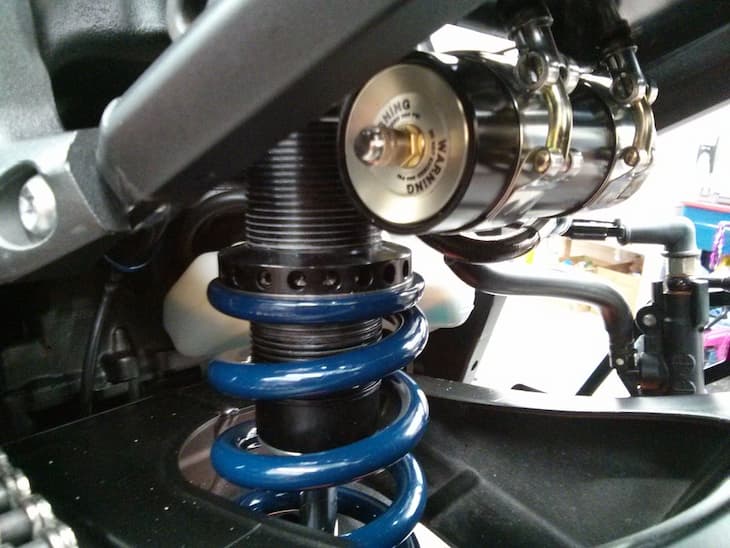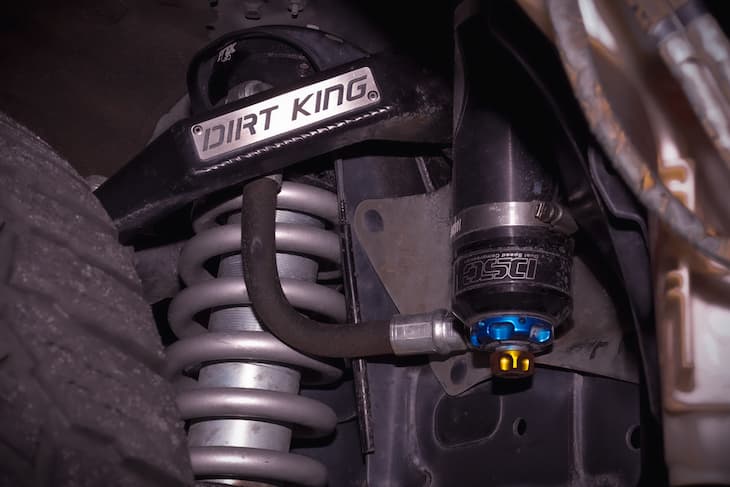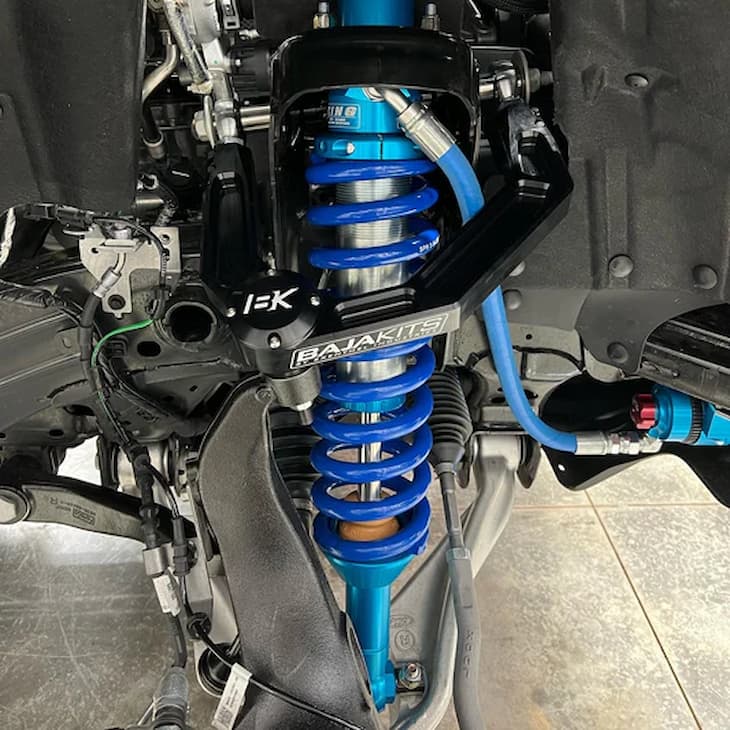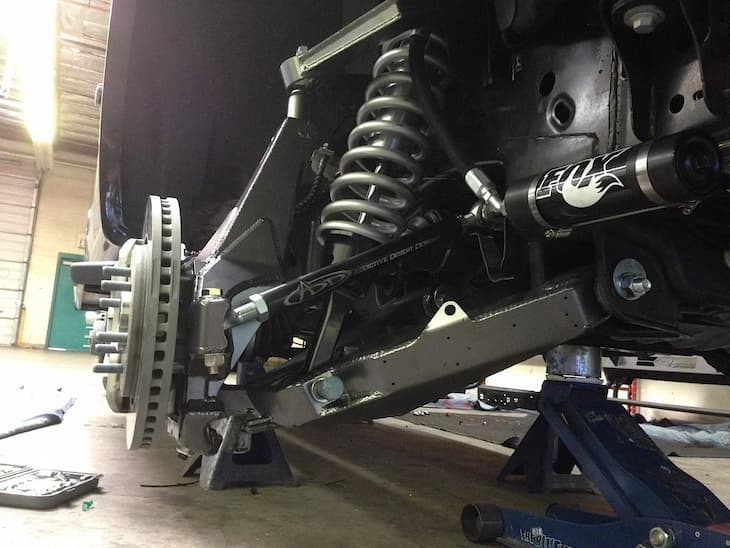Although most ute owners and hardcore off-roaders are fully aware of how damaging heat can be to engines and transaxles, many don’t know that it’s just as damaging to their shock absorbers.
You only have to look objectively at what shock absorbers are – fluid-filled pistons – to understand how easily they build up and retain heat, though. Shock absorbers rely on an emulsified, or internally separated mixture of oil and nitrogen gas as a damping fluid to provide non-stop, road-smoothing service, but a lot of heat is generated in the process. The result is an aerated, heat-fatigued fluid inside the shock that’s under incredible pressure and determined to find its way out at all costs.
In Australia’s semi-arid climate and with no mechanical means of cooling, shock failure is unavoidable unless you have a solution to beat the heat. Fortunately, there are shocks designed specifically to address this, and they can make a night vs. day difference if you have a heavy ute that you typically take off-roading.
Keeping Cool with Remote Reservoir Shocks
Believe it or not, the key to preventing dangerous heat buildup in shock absorbers is really just a matter of increasing fluid volume. It’s where installing fully adjustable remote reservoir shocks on your vehicle is not only going to give you better shock cooling, but improve your suspension’s all-around performance as well.

Instead of housing the shock’s main piston rod together with the oil and gas combination inside a single cylinder, remote reservoir shocks utilize an external reservoir cylinder for storing the pressurized stabilizing gas separately. A floating piston inside the reservoir further separates the shock’s oil from the gas, the result of which is:
- Complete elimination of performance-robbing oil aeration and cavitation;
- A significant increase in oil capacity, and surface cooling area; and,
- An immediate decrease in internal operating pressure, and less heat-induced wear on internal components.
External reservoir shocks do away with the complex mono-tube and twin-tube shock formats that are inherently better at retaining heat than dissipating it. By separating the main piston rod from the damping medium, the potential for oil breakdown and leaking seals is dramatically reduced, while also providing a streamlined shock assembly that’s both easier to install and maintain.
Remote Reservoirs Give You Flexibility
External reservoir shocks come in 2 variants: remote and piggyback type.
With remote-type shocks, the reservoir cylinder containing the floating piston and stabilizing gas is detached from the shock absorber’s body. With the only connection between them being the high-pressure fluid hose, the reservoir cylinder can be mounted anywhere under the chassis that you like.

On piggyback-type shocks, the reservoir cylinder holding the floating piston and stabilizing gas is mounted directly onto the shock absorber, with fluid passing between them through an internal connecting tube.
Both types offer the same core of superior performance attributes that include:
- An increase in the travel distance of the shock’s piston rod, leading to an improvement in ride quality;
- A greater attainable volume in the reservoir cylinder, allowing for more consistent pressure for damping; and,
- The ability to adjust the amount of damping at the reservoir cylinder for either a smoother or firmer ride.
The advantage that remote types have over piggyback types, however, comes from both cooling and convenience.
- Extra cooling capacity. Although external cylinders provide a larger cooling surface, the high-pressure hose used with remote reservoirs adds extra oil capacity that’s can support even greater heat dissipation.
- Optimized mounting. Space comes at a premium inside wheel wells, and shocks with remote reservoir cylinders can be ideally positioned where they won’t come into contact with oversized tyres or other suspension components.
- Easier access. When it’s time to recharge, rebuild, or adjust the settings on your reservoir cylinder, you’re guaranteed to have easier access to it if you’ve chosen the perfect mounting location yourself.
And not only do remote reservoir shock absorbers give you the most flexibility between the 2 external variants, but they also give you the full-on custom appeal that everyone will notice. Extra tough bracket kits are readily available for remote cylinders as well, so you don’t have to worry about fabricating your mounting hardware.
Remote Shocks for All Kinds of Off-Roaders

You can buy complete remote reservoir shock kits made especially for some of the most common off-roading vehicles in Australia, such as:
- GQ / GU, and Y60 / Y61 Nissan Patrols;
- 76 / 78 / 79 Toyota Landcruisers; and,
- PX / T6 Ford Rangers.
These front and rear kits come with lift ranges between 2” – 6”, and are built around a core of high-quality design features that include:
- High tensile steel cylinder construction with CR3+, tri-chromium plating;
- Billet aluminium components and seal caps;
- Maximum strength, chrome-hardened main piston rods;
- High-pressure hose and seals; and,
- Fully protected Schrader valves for nitrogen recharging.
While these kits have everything that you need to get your remote reservoir shocks installed, you still won’t fully appreciate how advanced they are until you’ve fine-tuned them.
It’s a capability that you don’t have with ordinary hydraulic, or gas-filled shocks, and it’s the one capability that you’re going to love the most with reservoir shocks.
Tuning Remote Shocks the Way You Want

With a wide range of compression stage adjustment possibilities, you have total control over how remote reservoir shocks perform. Twist knob adjustments at the reservoir cylinder on all remote reservoir shocks let you dial in superior handling shock performance that corresponds with:
- Improved stability over long distances;
- Greater predictable over rough terrain; and,
- Increased safety with heavier loads and higher speeds.
Regardless of whether your preference is for driving through the bush, or winding your way through a long forest road, these shocks will let you tune in to the ride that’s just right for you. Some shocks include as many as 45 high-speed/low-speed/rebound adjustment settings; but that’s an indicator of how much fine-tuning you can do, while still keeping everything cool.
The Final Word
At the end of the day, while your standard hydraulic and gas-filled shocks are built to take a lot of punishment, they’re not designed to hold out for long against the excessive heat and massive operating pressures of long, bone-jarring jaunts off-road. Increasing the shock volume is the only remedy that immediately addresses both problems.
Fully adjustable remote reservoir shocks give you the additional volume that’s needed to keep those internal temperatures and pressures at a level that won’t destroy the shock or your ride quality. They function exactly like your standard shocks, only much more efficiently, and you won’t believe how much better your ute or 4WD is going to perform once you install them.


















